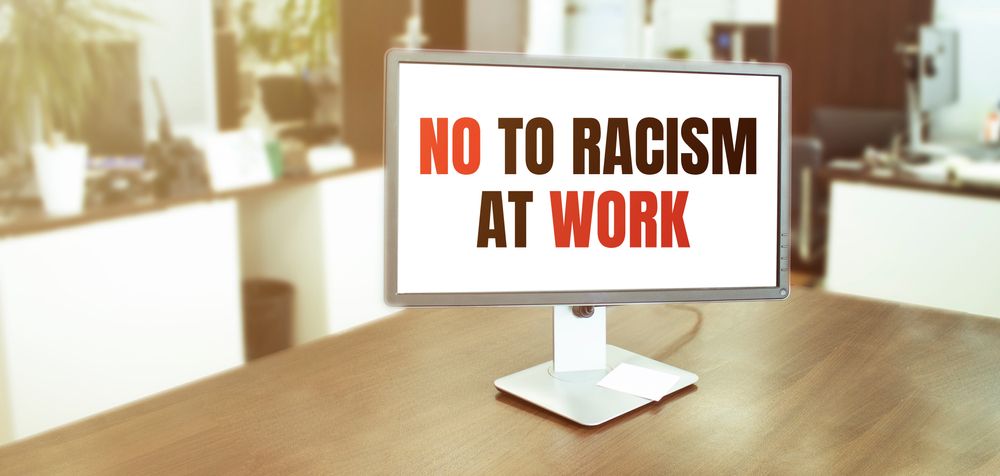
What is considered as racist behaviour at work?
Racism in the workplace comes in various forms of discrimination. Many of these forms fall into one of the following categories:
Direct racial discrimination
Direct racial discrimination occurs when you are treated unfairly because of your race while another person from a different racial group is treated more favourablyin similar circumstances.
This happens, for example, when you’re denied a promotion because “your type doesn’t fit in,” or when you’re not allowed to visit a customer because “they’re very traditional, so we’ll send *a white person* instead.”
Indirect racial discrimination
Indirect racial discrimination occurs when a rule or policy set by an employer places people from a certain race, ethnicity or nationality at a disadvantage. This includes prohibiting certain head coverings or hairstyles.
Racial harassment
Racial harassment is when you are demeaned, insulted, or humiliated because of your race. This includes both overt insults and degrading and hostile behaviour or subliminal, subtle remarks. Racial harassment includes:
- Being shouted at
- Being called racist names
- Racial ‘jokes,’ including offensive tweets, text messages, social media entries and screen savers
- Being denied certain benefits because of your race
- Being overlooked for promotion and/or training
- Being bullied
Victimization on the basis of race
It is racial victimization if you complain that you have experienced discrimination and are treated badly or worse afterward. This is shown, for example, by being excluded or placed on leave while your complaint is being processed or having to follow other disciplinary procedures.
Racial discrimination by association
A person can also be racially discriminated against while not necessarily belonging to a minority. This happens, for example, when your employers treat you unfairly because you associate with people of a different race or because you are perceived as belonging to people of a different race.

What can you do if you experience racism at work?
Every employer should create a company policy that prohibits bullying or harassment and provides for equal opportunity, inclusion and tolerance as the basis of the employment relationship.
Accordingly employers and employees should be aware that any form of racial discrimination or harassment is against the law. This also applies to discrimination by third parties, such as customers, suppliers, patients or clients.
However, if you find yourself in a situation where you experience racism at work or are unfairly treated, it is important that you follow these tips:
- Report racist remarks or abusive behaviour to your supervisor
- Collect evidence and take a note of what behaviour you found offensive
- Make a note of when, where, and by whom the incident occurred
- Keep a copy of all offending texts, tweets or Facebook posts
- Record in a diary the efforts you made to stop the behaviour and the effect this had
- Talk to your union representative if you are a member of a union
Keep in mind that the person making the racist comments may not know how hurtful or inappropriate such statements are. White workers in particular may not have experienced racism themselves and are therefore not very sensitive to this issue. So sometimes it is enough to let the offender know that their behaviour was inappropriate, that it hurt them, and that it is important to stop such comments.
If the person still continues or if you don’t feel comfortable enough speaking to the person, there is also the option of speaking to a manager who is higher in rank than the offender. You should explain neutrally what happened and ask your employer to ensure that such racist behaviour does not occur again.
Also, write down when you made a complaint and whether any consequences, changes or an apology followed.
Your employer:
- Should take your complaint/report very seriously
- Should investigate any racist incident and interview the perpetrator and any witnesses
- Should hold the perpetrator accountable
- May convene a disciplinary hearing or a tribunal claim (in certain cases) and impose a disciplinary sanction (e.g., a warning or termination)
- May require offenders to formally apologize to you or provide refresher training on racism to all employees

What can companies and leaders do to stop racism at work?
Racism is still a problem that is omnipresent in our society and also in many workplaces. Institutionalized racism, in particular, is woven into many systems, processes, and organizations in our everyday lives.
Accordingly, the responsibility lies especially with leaders, who must ensure that racist structures are eliminated from their organizations and that a respectful and tolerant work environment prevails. No employee should be disadvantaged by or in fear of blatant xenophobia.
There is no question that combating racial discrimination is indispensable from an ethical point of view. However, in addition to these ethical aspects, there are also other benefits for your company, such as a multi-perspective way of working due to ethnic diversity. This can lead to your company performing better than less diverse competitors.
However, equality and sustainable change can only take hold permanently if a company’s leaders and managers take action and lead by example.

Train all employees and managers
Workplace racism can only be combated if it can be recognized and classified by everyone involved. Therefore, it is essential to train all managers and employees on the topic of racism.
The training should be conducted in a structured and professional manner. There should be no exceptions. White workers as well as employees of color, regardless of seniority or position, all should understand and practice equality, diversity and inclusion.This will ensure that the company is welcoming and compliant with the law.
Every organisation should ask itself what measures have already been taken against institutionalized racism and how it is measured whether the measures are successful. If employees cannot answer this question specifically, as a organisation you should ensure that anti-racism measures are omnipresent and that every employee knows what they can do to combat racism in the workplace.
Anti-racism training should also be integrated into all talent and HR processes to ensure that it is continuously applied and effective. In addition to training, there are also numerous films, books and podcasts that can advise on the anti-racism learning process at your company.
Understand the problem and collect data
Racism in the workplace often occurs subconsciously. Yet, affected individuals suffer from the decisions that are made because of institutionalized racism. To prevent certain groups of people from being disadvantaged, your company should collect and develop diversity data. This data should lead to effective intelligence gathering that provides an indication of whether racist behaviour is occurring in your organization. Data collected could include:
- The ethnicity of employees who are subject to disciplinary action
- The ethnic makeup of teams at different seniority levels
- An ethnic pay gap alongside the gender pay gap
From here, you need to analyze the data regularly, communicate the findings to all managers and leaders, and create action plans to address imbalances.
Take responsibility
To bring real change in your company, racism at work must be addressed with commitment and competence. This includes providing regular and transparent information about company goals and developments on racism and taking complaints and suggestions seriously. You should:
- Treat complaints with respect
- Investigate allegations fairly and without bias
- Hold the perpetrators accountable
- Establish a zero-discrimination policy
- Establish clear workplace policies and educate all colleagues about them
- After a complaint, ensure that the problem has been resolved and has not worsened
- Do not simply transfer the complainant, but eliminate discrimination at its root
- Own up to mistakes and communicate that you will learn from it
- Take concrete action
Find review and resolution processes
Structured processes are particularly important to prevent racial discrimination in the workplace. If a racist incident does occur, it must be thoroughly reviewed. Look at what aspects of your organizational culture made such an incident possible and ensure that such incidents cannot happen again.
- Pay particular attention to the hiring process to ensure impartiality and equal opportunity for all applicants.
- Ensure that line management is equitable and that managers have enough resources to support all employees.
- Make sure it is clear that bias often takes place unconsciously and can thus affect the treatment of certain groups of employees
How should systemic racism be dealt within the workplace?
To break the cycle of discrimination, it is important not to blame only one individual for racist behaviour. Often, only the active perpetrator who has engaged in racist abuse is held responsible – possible culpability of others within the companies is often ignored. This is especially wrong because most often systems enable racist incidents.
Only by examining your company’s entire system and not just punishing a single perpetrator, can racism in the workplace be eliminated in the long run.
Listen to the groups that are or could be discriminated against
To stop systemic racism in your organization, it’s important to know what forms racism can take and what problems those affected face. So listen to what groups experiencing racism have to say about their experiences with micro and macroaggressions in the workplace, and work with them to develop plans for greater tolerance in the workplace. Also, think about how you can support those affected and how to take action against racist perpetrators.

What do you need to pay attention to as a manager?
Tackling racism and racial discrimination in the workplace is complex, challenging and oftentimes an uncomfortable subject. Still racism at work must be handled properly. That said, it is essential, especially for white leaders, to be proactive in combating racism in the workplace. This takes courage, commitment, knowledge and practical action. Feel comfortable asking for advice and accept the fact that it will be a long way to eliminate racism at work.
Ensure that the corporate identity is characterized by equality and progress in an open-minded direction by fulfilling your responsibility and by considering how you can personally address systemic discrimination in measurable ways. Also, make sure you are not guided by guilt; guilt does not lead to change. All truly inclusive leaders know that this work is not only necessary when terrible events occur, but is part of everyday life.




